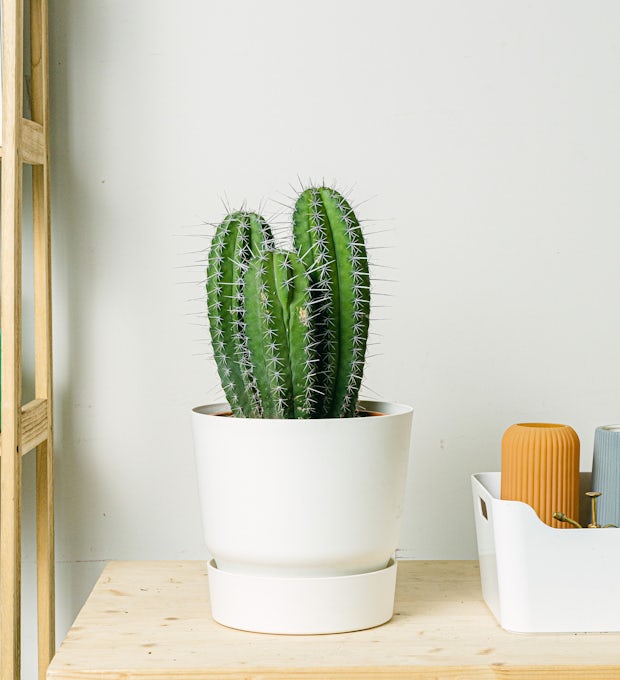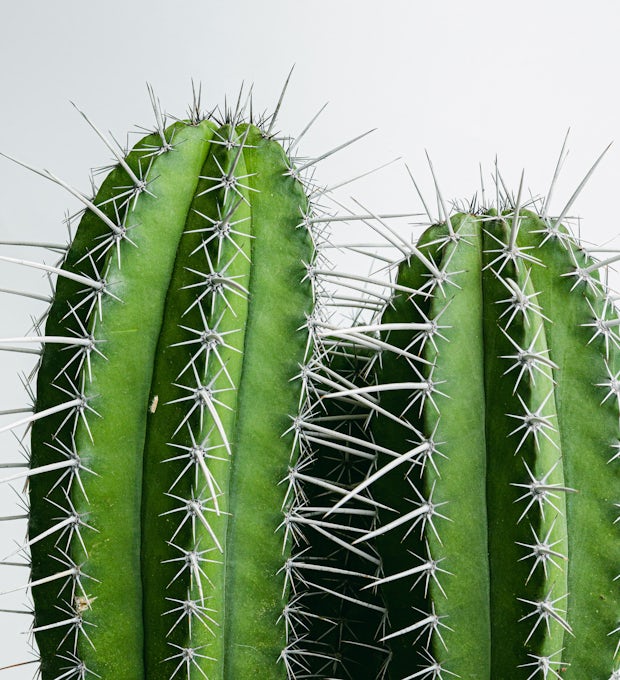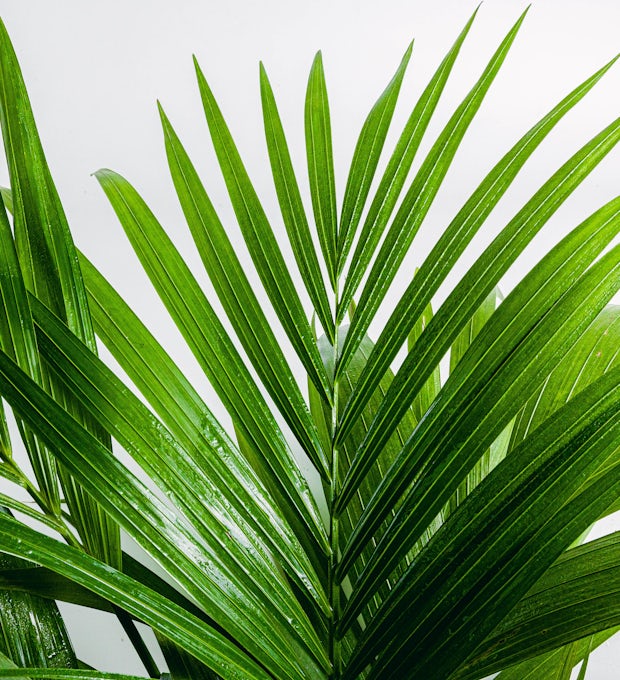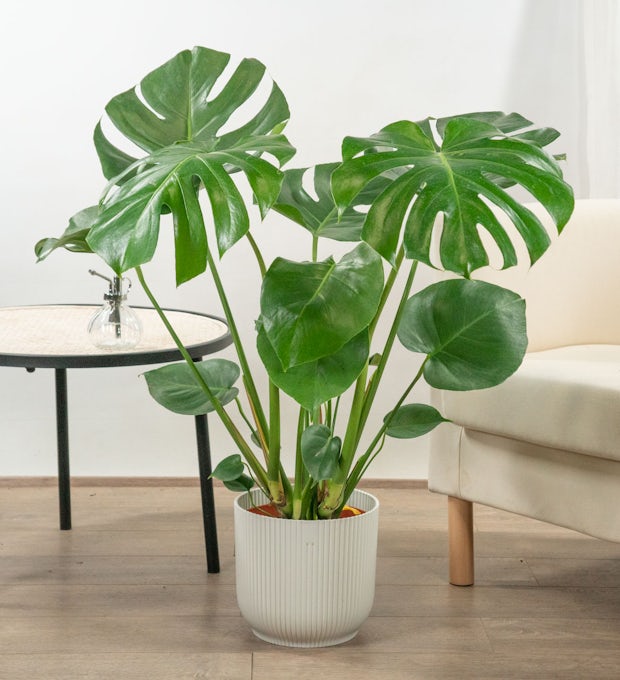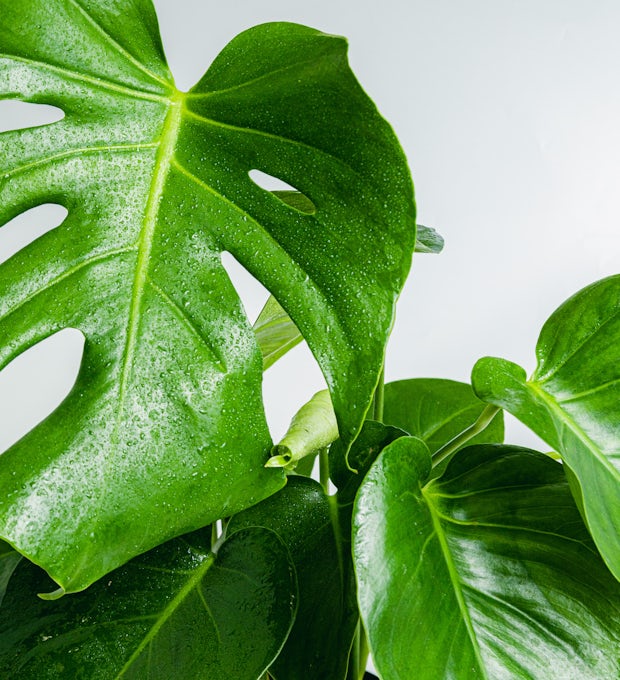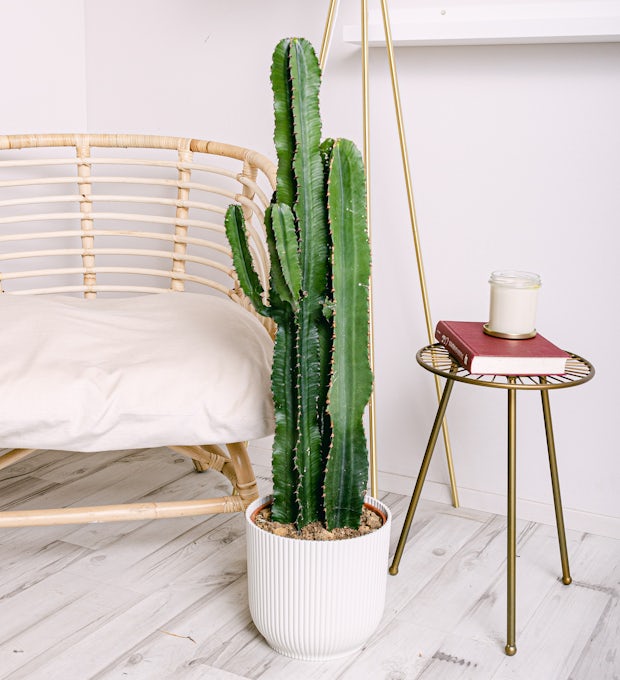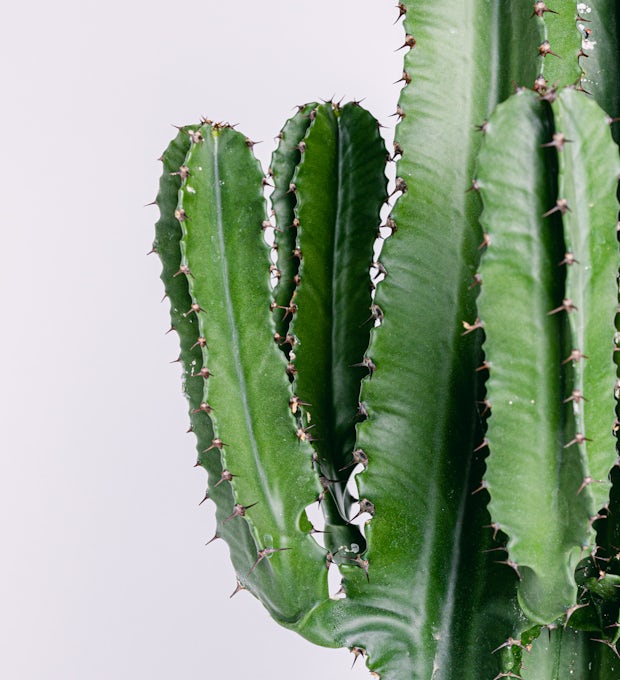Green accents can liven up a room and give it a fresh, natural feel. In this article, we will introduce various ideas for decorative plant design. From miniature gardens to vertical walls, there are many ways to use plants as eye-catchers. In addition, low-maintenance plants for a green thumb without much effort are presented and tips on how to choose containers and pots are given. Sustainability in plant design is also discussed, with approaches such as upcycling and ecological solutions. Discover the variety of green accents and be inspired to embellish your spaces with natural decorative elements.
Plants as eye-catchers: The importance of green accents in the room
Plants can not only serve as decoration in the room, but also act as an eye-catcher. Green accents create a pleasant atmosphere and add a touch of freshness and vibrancy to any room. Plants have the ability to enhance spaces and exude a natural calm. They are an easy way to enhance the ambiance and make the room more visually interesting. Whether in living rooms, offices or public areas - green accents attract attention and ensure a harmonious overall picture. It is important to choose the right plants for each room and to pay attention to the individual needs of the plants. Some plant species are particularly suitable as eye-catchers, such as large palm trees or colorful flowers. Through clever placement and combination of different plants, you can set interesting accents and visually enhance the room. It is worth being creative when designing the room with plants, trying out different styles and arrangements. Eye-catching plants are an easy way to add a fresh and natural touch to any room.
From miniature gardens to vertical walls: a wide range of plant design options
Plants are not only a natural decoration, but also a way to liven up spaces and give them an individual touch. There are many options for plant design, from miniature gardens to vertical walls. A miniature garden is a small landscape in a container, usually made of glass or ceramic. These gardens can be placed in any room and are especially suitable for people with limited outdoor space. vertical gardens are a great option for anyone who doesn't have an area on the ground. They can be attached to a wall and can accommodate many different types of plants. Another option is to use climbing plants, which can be attached to a trellis or wall. Not only do they add greenery, but they can also serve as a privacy screen. To achieve harmonious arrangements and exciting contrasts, plants should be carefully selected and combined. Low-maintenance plants are ideal for those with a green thumb without much effort. The right choice of containers and pots also plays an important role in plant design, as they must combine functionality and aesthetics. Finally, there is sustainability in plant design, where upcycling and ecological approaches can be used to get the most out of old materials while respecting the environment. With these diverse possibilities of plant design, every room can be individually designed.
We ship plants to all locations, you can see more options here.
Natural Decorative Elements: How Plants Liven Up Spaces
Plants are not only beautiful to look at, but also have a positive effect on our mood and well-being. They can enliven spaces and contribute to a pleasant atmosphere. When choosing plants, you should make sure that they correspond to the lighting conditions in the room and are easy to care for. There are a variety of plants that work well for decoration, such as succulents or ferns. These can be used in different sizes and shapes to create interesting arrangements. Adding flowers can also brighten up a room and give it a fresh scent. Plants can also serve as natural room dividers, thus structuring the room. Vertical gardens are particularly popular at the moment, where plants are attached to the wall and thus create a green accent. When choosing the right container for the plants, you should make sure that it fits the style of the room and is functional. Again, there are many options, such as terracotta pots or upcycling options such as old tin cans. Overall, plants offer an easy way to decorate spaces while having a positive effect on our well-being.
We ship plants to all locations, you can see more options here.
Low-maintenance plants for a green thumb without much effort
Low-maintenance plants are a great option for those who would like to add green accents but can't put a lot of time and effort into caring for them. These plants require little attention and thrive in minimal conditions. An example of a low-maintenance plant is the Zamioculcas, also known as the ZZ plant. It is known for its ability to survive even in dark rooms and requires only infrequent watering. Another popular choice is the bow hemp (Sansevieria), also known as "mother-in-law's tongue". It tolerates both light and shady locations and only needs occasional watering. For a touch of color, you can opt for succulents such as echeverias or haworthias. These plants come in a variety of shapes and colors and only require occasional watering. If you're looking for a climbing plant that requires little maintenance, ivy is a great choice. It can be mounted on walls or in hanging baskets and grows slowly, which means it only needs occasional pruning. With these low-maintenance plants, you can add green accents to your space without having to invest a lot of time and effort.
Plant combinations for harmonious arrangements and exciting contrasts
Plant combinations are a great way to create harmonious arrangements and exciting contrasts in plant design. When choosing plants for an arrangement, it's important to consider the size, shape, texture, and color of each plant. For example, smaller plants such as succulents and cacti can be combined well with taller plants such as ferns and palm trees to create interesting elevation changes.
Another way to create harmonious arrangements is to combine plants with similar leaf shapes and textures. For example, the round leaves of a Rubber Plant can be combined well with the serrated leaves of an aloe vera.
To create exciting contrasts, you can combine different colors and shapes. One way is to combine plants with different leaf colors. For example, you can combine a green plant with a red or yellow plant to create a strong visual contrast.
Finally, it is also important to consider the needs of each plant. For example, if you combine a moisture-loving plant with a drought-resistant plant, it can cause one of the plants to not thrive. Therefore, when choosing plants for an arrangement, you should make sure that they have similar care needs.
Overall, plant combinations offer many possibilities for creative and appealing arrangements in plant design. By taking into account the size, shape, texture, color, and care needs of each plant, you can create harmonious arrangements and exciting contrasts.
The right choice of vessels and pots: functionality meets aesthetics
When choosing containers and pots for plant design, functionality and aesthetics come together. The right choice of container can have a big impact on the overall look of a room. There are a variety of options that can meet both the needs of the plants and aesthetic preferences.
First of all, it is important to consider the needs of the plants. Some plants require a lot of space for their roots, while others can be planted in smaller pots. Make sure that the selected vessels have sufficient drainage holes to prevent waterlogging and promote root growth.
In addition, aesthetics play a crucial role. The choice of material can enhance or contrast the style of the room. Ceramic or terracotta pots, for example, add a rustic charm, while modern plastic or metal containers tend to be minimalist.
The size of the containers should be proportional to the size of the plants. Smaller plants look great in small pots, while larger plants look better in larger containers.
The color of the vessels can also play an important role. Light colors such as white or pastel tones will make the room look larger and brighter, while darker colors such as black or anthracite can create an elegant contrast.
Ultimately, it is important that the vessels chosen are both functional and aesthetically pleasing. By reconciling these two aspects, you can ensure that the plant design not only looks beautiful, but also meets the needs of the plants.
Sustainability in plant design: upcycling and ecological approaches
Sustainability is playing an increasingly important role in plant design. The focus is on upcycling and ecological approaches. By reusing materials, we can not only save resources, but also create creative and unique planters. Old boxes, bottles or even shoes can be repurposed into original flower pots. By breathing new life into these items, we give a special touch to our plants while helping to reduce waste.
Ecological approaches in plant design refer to the responsible use of natural resources. This includes, for example, the use of biodegradable substrate instead of conventional potting soil, which is often enriched with chemical fertilizers. Collecting rainwater to irrigate the plants is also a sustainable practice that both saves water and reduces the use of tap water.
In addition, by choosing native plants, we can further reduce our ecological footprint. These plants are adapted to the local climate and therefore require less care and water. They also provide habitat and food for native insects and birds.
Integrating sustainability into plant design allows us to express our love for nature in an eco-friendly way. Upcycling and ecological approaches offer not only practical solutions, but also the opportunity to enliven our spaces with green accents while reducing our environmental footprint.
Plant design is a great way to add life and freshness to any room. From miniature gardens to vertical walls, there are numerous ways to add green accents. Low-maintenance plants are a great choice for people with little time or experience in gardening, while combinations of plants can bring out different textures and colors. Choosing the right pots and vessels can also have a big impact on aesthetics. However, it is not only the appearance that is important, but also the sustainability of the plant design. Upcycling and ecological approaches can help reduce the ecological footprint.
As readers, we should ask ourselves how we can incorporate our love of nature into our homes without harming the environment. How can we make our plant design more sustainable? What materials can we reuse? By asking ourselves these questions, we can unleash our own creativity and at the same time contribute to the protection of our environment. Setting green accents should not only look beautiful, but also have a positive impact on the world around us
